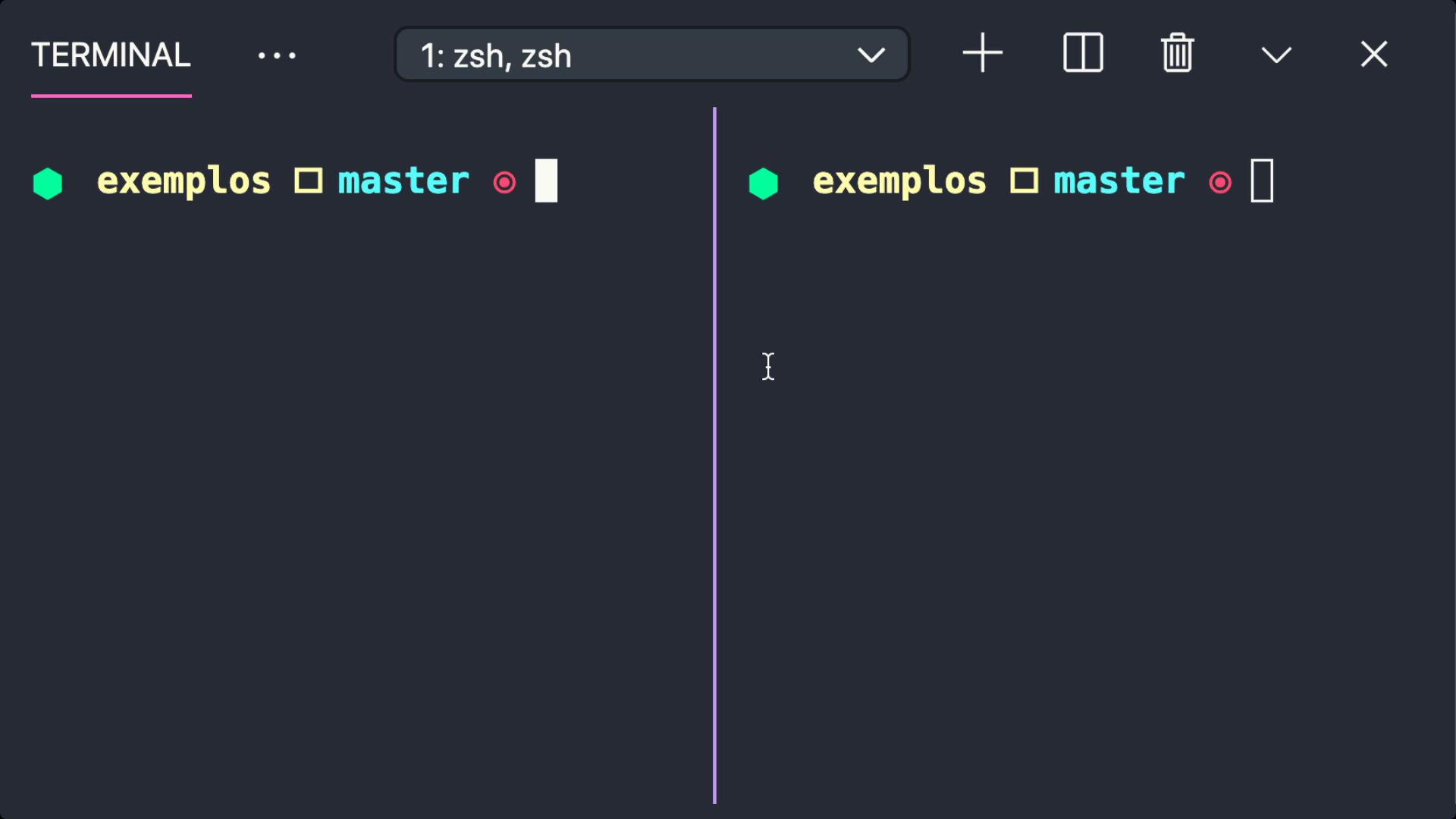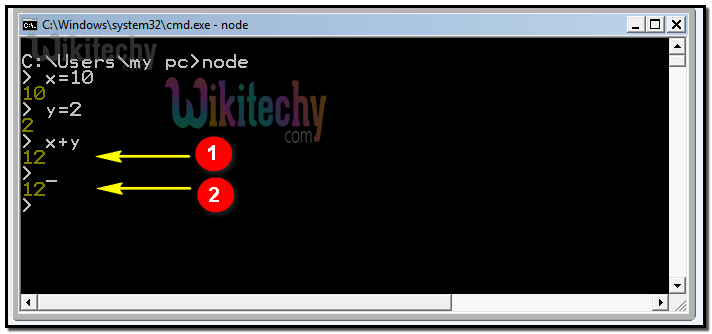
So we see the value of a printed, no newline, and then the return value of the stream write attempt, which is true because nothing went wrong. console.log is kind enough to automatically insert a newline for you, process.stdout obviously doesn't. This is similar to working with Shell in Linux.But in Node.js, it’s quite easy to follow.
#NODEJS REPL PLUS#
"that's not just a", no it's not, like mentioned above it's the thing you did plus the return value. It is a command shell (prompt) where you can enter commands. There is absolutely no reason to do this, but you can: > var a = "lol" Input and output may be from stdin and stdout, respectively, or may be connected to any Node.js stream. While running, instances of repl.REPLServer will accept individual lines of user input, evaluate those according to a user-defined evaluation function, then output the result. While in real Node runs (from file) you can only rely on console.log, in the REPL you can also just type the variable name and see the return value: > var a = "cats":įinally, you're in Node, so you have direct access to the standard out pipe through, so you can stream write to that. The node:repl module exports the repl.REPLServer class. However, you're in the REPL, which means any commands you evaluate will also log their return value automatically.
#NODEJS REPL CODE#
The shell reads JavaScript code the user enters, eval uates the result of interpreting the line of code, prints the result to the user, and loops until the user signals to quit. Node.js REPL Terminal Read Reads users input, parses the input into JavaScript data-structure, and stores in memory. It can be extremely useful for experimenting with Node.js, debugging code, and figuring out some of JavaScript's more eccentric behaviors. It is the Node.js interactive shell any valid JavaScript which can be written in a script can be passed to the REPL. This does what it says on the tin: it logs, to the console. The Node.js Read-Eval-Print-Loop (REPL) is an interactive shell that processes Node.js expressions. Node.js ships with a Read-Eval-Print Loop, also known as a REPL.

The ".js" is even optional) but: you have three options.įirst, the universal way to do this in JavaScript is to use console.log (and related statements). Just like the Unix, Linux Shell, Command Prompt & PowerShell, Nodejs REPL is also a. js files and then run that using node realfile.js instead. The REPL acronym stands for READ, EVALUATE, PRINT & LOOP. The following example will explain how can we re-execute the saved file to the next session.Working in the REPL is a bit weird (most people, and I'd recommend you do too, make real. Old saved files can be opened using this command. This saves only the current session work. Whenever you want to save the complete Node REPL work, you can use this command and can save complete commands to one file. This command is used when you are working with multi-line expression and you want to exit from multi-line.

This is used when we want to get the list of all commands. When you press Tab, then you will get the output, like the given below. This is used to get the list of current commands. Pressing Ctrl + C twice causes the REPL to quit. REPL Features Press Ctrl+C to terminate the current command. It is extremely useful for experimenting with node.js and debugging JavaScript code. This command is used to get commands from history. The node.js REPL works exactly the same as Chrome’s REPL, so from this prompt, you can type any Javascript command you wish. BASH node repl.js BASH > const n 10 You can pass a string which shows when the REPL starts. To start the REPL command prompt, type in the following line JS repl.start() Run the file in the command line. But CTRL+D will directly terminate you from Node REPL. Using the repl variable we can perform various operations. If you terminate the Node using CTRL+C+C, then first time you will be terminated from current command then you will be terminated from REPL. This command is also used to terminate Node REPL. In the above example I was working in loop but I wanted to terminate from current command. REPL is a simple interactive environment that takes single user inputs, executes them, and returns the result to the user. This does what it says on the tin: it logs, to the console.

This is used to terminate current command. First, the universal way to do this in JavaScript is to use console.log (and related statements).


 0 kommentar(er)
0 kommentar(er)
